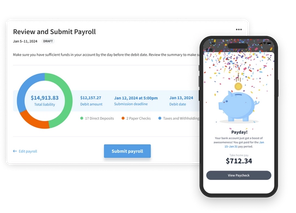
Eddy’s HR Mavericks Encyclopedia
The world's largest free encyclopedia of HR, with 700+ HR articles and podcasts.
Created by Eddy and our HR Mavericks community.
Employee Burnout
Have you ever felt burned out at work? If so, you know the difficulty of performing well while feeling that exhaustion. Employee burnout is a problem that can affect anyone in any role at any company. Being able to spot the early warning signs of employee burnout can help you prevent negative impacts for both your employee and your company. Don’t fall into the trap of misinterpreting your employees' burnout as something else.
What Is Employee Burnout?
The Mayo Clinic defines employee burnout as a special type of work-related stress—a state of physical or emotional exhaustion that also involves a sense of reduced accomplishment and loss of personal identity.
72% of employers say stress and burnout are a challenge or concern for their organization
Compensation and Benefits StatisticsWhat Are Signs That an Employee Is Burned Out?
Knowing the signs of burnout can help you intervene to make sure your employees feel connected to and supported by your organization. Below are a few signs to look for.
- Inability to concentrate. Employees who experience burnout often experience the inability to concentrate. You may notice that simple tasks take the employee a long time to complete.
- Sickness. Burnout, like stress in general, compromises one’s immune system as well as their motivation. An increased number of sick days taken by an employee can be a sign of burnout.
- Decreased productivity and performance. Decreased productivity and performance deficiencies happen gradually, and both can be signs of burnout.
- Isolation. Employees who are normally outspoken and outgoing may begin to distance themselves. It is more difficult to detect burnout in people who work in remote work settings or are naturally reserved.
- Physical symptoms. Sudden weight loss and/or gain, headaches, and anxiety attacks are all physical symptoms of exhaustion and stress that may be brought on by burnout.
What Is the Cost of Employee Burnout?
Employee burnout is extremely costly for organizations.
- Healthcare costs. A 2015 Harvard Business Review report estimated that the annual cost of healthcare spending due to workplace burnout is $125-$190 billion dollars.
- Decreased productivity. According to Gallup, employees suffering burnout are 63% more likely to take sick days.
- Increased turnover. A Gallup poll found that employees are 2.6 times more likely to seek other employment when feeling burned out. And turnover is very costly; in 2017, an HRDive study found that it costs employers 33% of a worker's annual salary to hire a replacement.
Reasons Why Employees Get Burned Out
There are several reasons why an employee may experience burnout, including lack of autonomy, unclear expectations, dysfunctional workplace, and lack of work/life balance.
Lack of Autonomy
Research shows that when employees are given the freedom associated with autonomy, job satisfaction rises. However, the inability of an employee to influence their job, such as one’s schedule, or lack of resources, may cause an employee to feel out of control, and their wellbeing becomes impacted.
Expectations
Unclear or unreasonable job expectations create workplace conflicts, employee stress, dissatisfaction, and, ultimately, underperformance. Leaders should not rely solely on job descriptions, as they are a guide for conversation and an opportunity to build a relationship with your employees.
Dysfunctional Workplaces
The increased stress of working in a dysfunctional work environment can lead directly to job burnout. These work environments tend to have poor communication, low morale, high turnover, and in some cases, bullying.
Work/Life Balance.
Your employees are your most important assets. Lack of work/life balance leads to low employee engagement, performance deficiencies, decreased productivity, and complications in mental and physical health. Review how your company supports work/life balance and what it means to your employees.
How to Prevent Employee Burnout
The best way to prevent burnout is to invest in your employees' well-being.
Step 1: Communicate
Effectively communicating with your employees creates a work environment in which employees feel valued and inspired. Regular one-to-one meetings, as well as surveys, are an effective method for listening to your employees for signs of difficulties.
Step 2: Establish Clear Goals
Set clear expectations and goals. Don’t set the bar so high that employees are unable to attain it.
Step 3: Encourage Breaks
Performance suffers when we stay with a task for a long time, increasing stress and fatigue. Discuss the benefits of taking breaks, and lead by example.
Step 4: Consider Setting Up a Wellness Program
Review and/or create a wellness program. Don’t be afraid to leverage technology; digital support platforms provide employees the opportunity to share their mental and physical health problems, exchange health tips, and stay connected socially.
Step 5: Have a Disconnect Philosophy
Create a work environment that allows employees to truly disconnect with work by discouraging after-hours emails or phone calls. By implementing a disconnect philosophy, organizations encourage an effective work/life balance for employees that is likely to reduce employee burnout.
Topics

Wendy N. Kelly, MSHRM, PHR, SHRM-CP
Wendy is an HR professional with over 10 years of HR experience in education and health care, both in the private and non-profit sector. She is the owner of KHRServices, a full service HR management agency. She is also SHRM and HRCI certified, serves as a HRCI Ambassador, and voted 2021 Most Inclusive HR Influencer.
Frequently asked questions
Other Related Terms
Eddy’s HR Mavericks Encyclopedia
Employee Burnout
Have you ever felt burned out at work? If so, you know the difficulty of performing well while feeling that exhaustion. Employee burnout is a problem that can affect anyone in any role at any company. Being able to spot the early warning signs of employee burnout can help you prevent negative impacts for both your employee and your company. Don’t fall into the trap of misinterpreting your employees' burnout as something else.
What Is Employee Burnout?
The Mayo Clinic defines employee burnout as a special type of work-related stress—a state of physical or emotional exhaustion that also involves a sense of reduced accomplishment and loss of personal identity.
72% of employers say stress and burnout are a challenge or concern for their organization
Compensation and Benefits StatisticsWhat Are Signs That an Employee Is Burned Out?
Knowing the signs of burnout can help you intervene to make sure your employees feel connected to and supported by your organization. Below are a few signs to look for.
- Inability to concentrate. Employees who experience burnout often experience the inability to concentrate. You may notice that simple tasks take the employee a long time to complete.
- Sickness. Burnout, like stress in general, compromises one’s immune system as well as their motivation. An increased number of sick days taken by an employee can be a sign of burnout.
- Decreased productivity and performance. Decreased productivity and performance deficiencies happen gradually, and both can be signs of burnout.
- Isolation. Employees who are normally outspoken and outgoing may begin to distance themselves. It is more difficult to detect burnout in people who work in remote work settings or are naturally reserved.
- Physical symptoms. Sudden weight loss and/or gain, headaches, and anxiety attacks are all physical symptoms of exhaustion and stress that may be brought on by burnout.
What Is the Cost of Employee Burnout?
Employee burnout is extremely costly for organizations.
- Healthcare costs. A 2015 Harvard Business Review report estimated that the annual cost of healthcare spending due to workplace burnout is $125-$190 billion dollars.
- Decreased productivity. According to Gallup, employees suffering burnout are 63% more likely to take sick days.
- Increased turnover. A Gallup poll found that employees are 2.6 times more likely to seek other employment when feeling burned out. And turnover is very costly; in 2017, an HRDive study found that it costs employers 33% of a worker's annual salary to hire a replacement.
Reasons Why Employees Get Burned Out
There are several reasons why an employee may experience burnout, including lack of autonomy, unclear expectations, dysfunctional workplace, and lack of work/life balance.
Lack of Autonomy
Research shows that when employees are given the freedom associated with autonomy, job satisfaction rises. However, the inability of an employee to influence their job, such as one’s schedule, or lack of resources, may cause an employee to feel out of control, and their wellbeing becomes impacted.
Expectations
Unclear or unreasonable job expectations create workplace conflicts, employee stress, dissatisfaction, and, ultimately, underperformance. Leaders should not rely solely on job descriptions, as they are a guide for conversation and an opportunity to build a relationship with your employees.
Dysfunctional Workplaces
The increased stress of working in a dysfunctional work environment can lead directly to job burnout. These work environments tend to have poor communication, low morale, high turnover, and in some cases, bullying.
Work/Life Balance.
Your employees are your most important assets. Lack of work/life balance leads to low employee engagement, performance deficiencies, decreased productivity, and complications in mental and physical health. Review how your company supports work/life balance and what it means to your employees.
How to Prevent Employee Burnout
The best way to prevent burnout is to invest in your employees' well-being.
Step 1: Communicate
Effectively communicating with your employees creates a work environment in which employees feel valued and inspired. Regular one-to-one meetings, as well as surveys, are an effective method for listening to your employees for signs of difficulties.
Step 2: Establish Clear Goals
Set clear expectations and goals. Don’t set the bar so high that employees are unable to attain it.
Step 3: Encourage Breaks
Performance suffers when we stay with a task for a long time, increasing stress and fatigue. Discuss the benefits of taking breaks, and lead by example.
Step 4: Consider Setting Up a Wellness Program
Review and/or create a wellness program. Don’t be afraid to leverage technology; digital support platforms provide employees the opportunity to share their mental and physical health problems, exchange health tips, and stay connected socially.
Step 5: Have a Disconnect Philosophy
Create a work environment that allows employees to truly disconnect with work by discouraging after-hours emails or phone calls. By implementing a disconnect philosophy, organizations encourage an effective work/life balance for employees that is likely to reduce employee burnout.
Topics

Wendy N. Kelly, MSHRM, PHR, SHRM-CP
Wendy is an HR professional with over 10 years of HR experience in education and health care, both in the private and non-profit sector. She is the owner of KHRServices, a full service HR management agency. She is also SHRM and HRCI certified, serves as a HRCI Ambassador, and voted 2021 Most Inclusive HR Influencer.
Frequently asked questions
Other Related Terms
Eddy's HR Newsletter
Sign up for our email newsletter for helpful HR advice and ideas.


